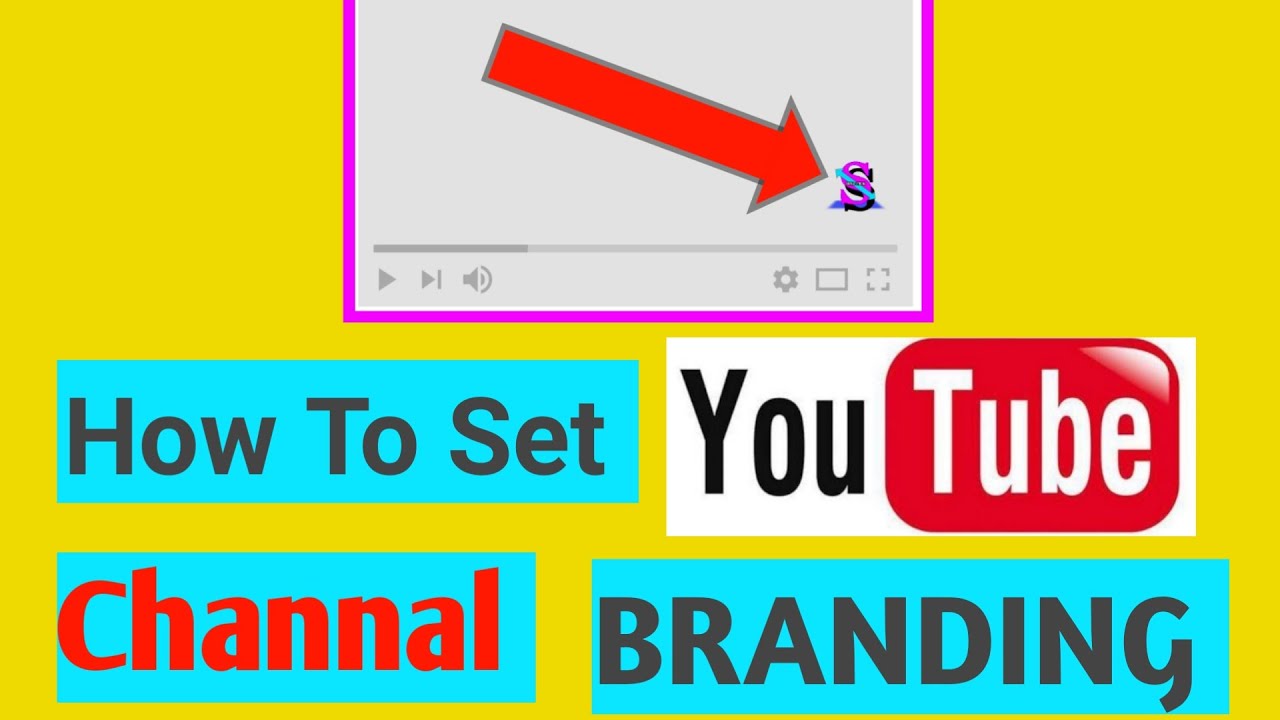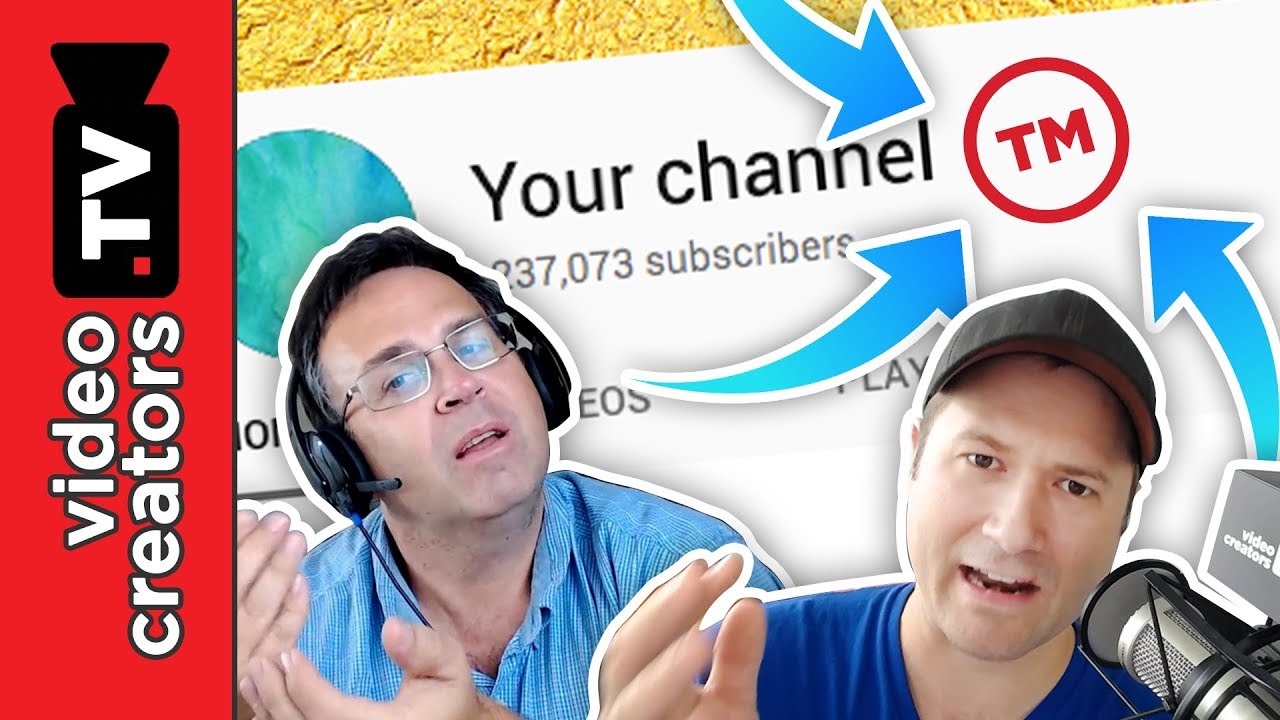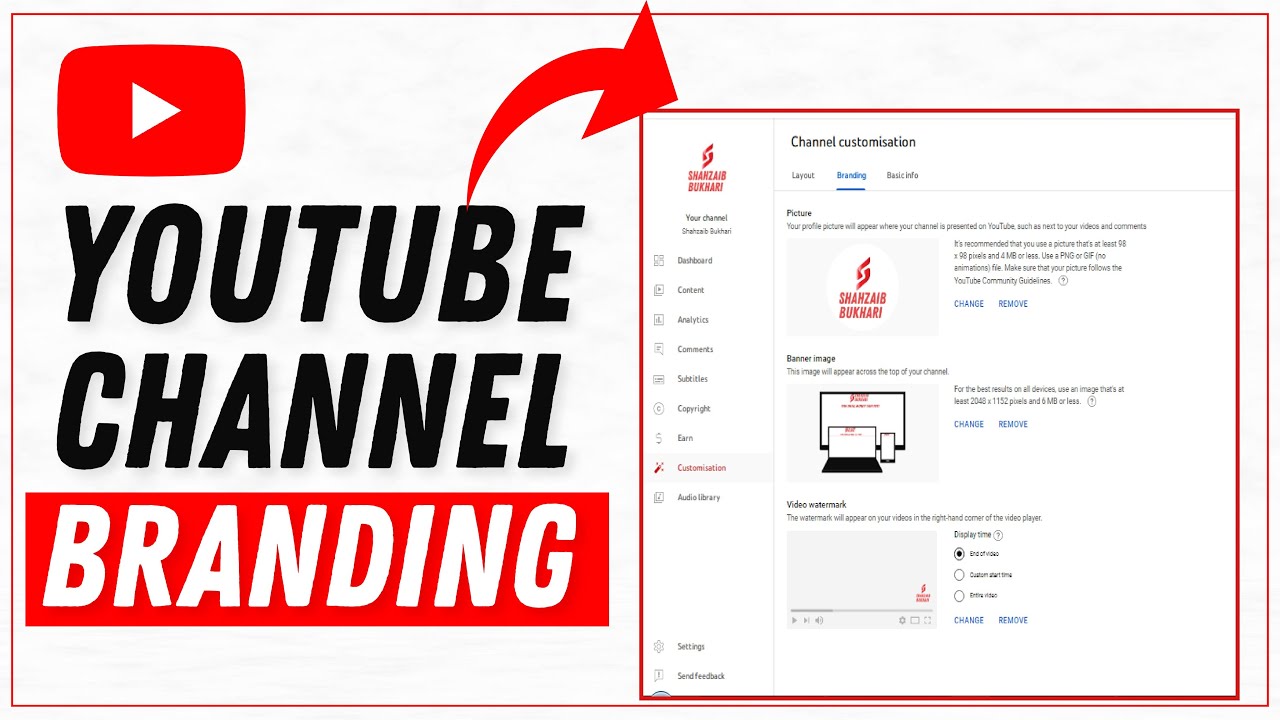Are you ready to take your YouTube channel to the next level? One of the best ways to protect your hard work and creativity is by trademarking your channel name. In this blog post, we’ll walk you through the essentials of trademarking, why it matters, and how to do it effectively. Whether you're a budding content creator or an established influencer, learning about trademarks can secure your brand's identity and protect your audience's trust.
Why Trademark Your YouTube Channel Name?

When you start your YouTube channel, you pour your heart and soul into creating unique content. But with that creativity comes the risk of others trying to capitalize on your hard work. Here’s why trademarking your YouTube channel name is essential:
- Protection Against Imitation: Trademarking your name gives you legal rights, allowing you to take action against those who might use a name similar to yours, which could confuse your audience.
- Brand Recognition: A registered trademark helps solidify your brand identity. It assures your viewers that the content they see under your name is authentic and original.
- Increased Credibility: Having a trademark can boost your credibility in the eyes of advertisers and partners. They are more likely to work with you when they see you take your brand seriously.
- Asset Value: Your channel name, once trademarked, is an asset. Should you choose to sell your channel or collaborate with a larger brand, a trademark can significantly increase its value.
- Legal Rights and Enforcement: If someone infringes on your trademark, you have the legal backing to enforce your rights. This can prevent the dilution of your brand and protect your established audience engagement.
Trademarking isn’t just a legal step; it’s a strategic move for your channel’s future. Here’s a closer look at each benefit:
Protection Against Imitation
Have you ever come across a channel with a strikingly similar name to another? It's more common than you think! If you don't trademark your name, you risk losing your brand identity to someone who might intentionally or unintentionally mimic it. When you register your trademark, it creates a clear distinction that protects your brand image.
Brand Recognition
The more recognizable your channel name is, the more likely you are to build a loyal following. Trademarking your name ensures that when viewers hear or see your name, they associate it with the quality content you provide. It builds trust—and trust is paramount in today’s digital landscape.
Increased Credibility
A trademark indicates that you take your YouTube presence seriously. This can lead to potential collaborations with brands who might be wary of partnering with an unprotected entity. When companies see that your channel is trademarked, they know they’re dealing with a professional, enhancing your negotiating power and opportunities.
Asset Value
As your channel grows, so does its value. A trademarked name can be a significant asset if you ever decide to sell your channel or bring in partners. It shows potential buyers or collaborators that you have taken the necessary steps to protect and establish your brand.
Legal Rights and Enforcement
Lastly, having a trademark provides you with concrete legal rights. If somebody uses your name or a confusingly similar one, you can pursue legal action. This not only helps maintain your brand integrity but also deters others from infringing on your rights. Knowing you have these protections can give you peace of mind as you continue to create and share your content.
In summary, trademarking your YouTube channel name is not only a smart move but a vital one for serious content creators. By ensuring your brand is protected, you’re setting the stage for growth, recognition, and monetization opportunities. So, are you ready to safeguard your creative journey?
Also Read This: Is Airy YouTube Downloader Safe
3. Steps to Trademark Your YouTube Channel Name

Trademarking your YouTube channel name is a crucial step in protecting your brand identity and ensuring that you can build a loyal audience without the fear of someone else using your name. Here’s a simple and clear guide to navigate the trademark process:
- Conduct a Trademark Search: Start by searching existing trademarks. You want to ensure your channel name isn't already in use or registered. You can use the USPTO's trademark database to check for any similar names.
- Determine Your Trademark Type: There are different types of trademarks, such as word marks (the name itself) and design marks (logo or graphic). Decide what you want to protect. If your channel has a unique logo, you might want to trademark both the name and the logo.
- Gather Required Information: Before filing, collect the necessary information. This includes your name, address, a description of your goods/services associated with the channel, and the channels where your content is available.
- File Your Application: You can file your trademark application online through the USPTO's Trademark Electronic Application System (TEAS). Choose between the TEAS Plus or TEAS Standard forms, depending on your needs and the complexity of your application.
- Monitor Your Application: After submission, keep an eye on the status of your application. You can do this through the USPTO’s Trademark Status and Document Retrieval (TSDR) system. Updates may take a few months, so patience is key.
- Respond to USPTO Office Actions: Occasionally, the USPTO may have questions or require additional information. If you receive an Office Action, respond promptly with the requested documents or clarifications to avoid delays.
- Maintain Your Trademark: Once your trademark is granted, you must actively use it in commerce. Additionally, file the required maintenance documents at regular intervals to keep your trademark in good standing.
By following these steps, you’ll be well on your way to protecting your YouTube channel name and your brand identity. It's a worthwhile investment for the future of your channel.
Also Read This: How to Share YouTube Videos on Instagram: A Quick Tutorial
4. Choosing the Right Trademark Class for Your Channel

When it comes to trademarking your YouTube channel name, selecting the right trademark class is essential. The trademark classification system categorizes goods and services into different classes, making it easier to identify and manage trademarks.
For YouTube channels, most of the time, you would fall into one of the following classes:
- Class 41: This is the most common class for entertainment services, which includes online video content, educational services, and entertainment services. If your channel focus is purely on producing videos and content for entertainment or educational purposes, this class is likely the best fit.
- Class 9: If you have products connected to your YouTube channel, like downloadable videos, software, or applications, you'll want to look at Class 9. This covers electronic media and software.
- Class 16: Should you take your brand further with physical merchandise, such as books or printed materials that relate to your channel, you might also consider Class 16. This includes printed materials, books, and merchandising.
- Class 25: If your content leads into fashion or apparel, then Class 25 would be appropriate for clothing items inspired by your channel.
Choosing the right class is crucial because it defines the scope of protection for your brand. If you anticipate branching out into various areas, consider filing in multiple classes to cover all potential bases.
Remember, the goal is to protect not just your current offerings, but also future endeavors that may align with your brand! So take time to assess what your channel represents now and what it could represent in the future. This foresight will help you make a wise decision in the trademarking process.
Also Read This: How to Cancel Your YouTube Premium Subscription: A Step-by-Step Guide
5. Completing the Trademark Application Process
Alright, you've done your homework and prepared everything needed to trademark your YouTube channel name. Now it's time to tackle the actual application process. It can feel a bit daunting, but don’t worry! I’m here to guide you through it.
First off, head to the United States Patent and Trademark Office (USPTO) website. This is where you’ll submit your application if you're in the U.S. Most countries have an equivalent trademark office, so look for the one that serves your area.
Here’s a breakdown of the steps you’ll need to follow:
- Choose the Right Application Form: The USPTO provides several options, like the TEAS Plus and TEAS Standard. TEAS Plus is generally cheaper but comes with stricter requirements.
- Provide Your Information: Fill in details about your YouTube channel. This includes your name, address, and email, along with any business entity information if applicable.
- Describe Your Trademark: Clearly describe what your trademark is (in this case, your channel name) and how it’s used in commerce.
- Select Your Goods/Services: Here’s where you need to specify the services your channel provides (like entertainment, education, etc.).
- Submit Specimen of Use: You’ll have to provide proof that you’re already using your channel name in commerce. This could be a screenshot of your channel or a link to a video.
- Pay The Fees: Fees can range widely depending on the form and the number of goods/services you’re trademarking.
Once you hit that ‘submit’ button, you’ll receive a confirmation receipt from the USPTO. Remember, the waiting game begins! It typically takes several months for the USPTO to review your application, so don’t panic if you don’t hear back right away.
If there are any issues with your application, the USPTO will contact you. You might have to provide additional information or make corrections. Make sure you respond promptly to keep the process on track.
Once everything is approved, you’ll receive a trademark registration certificate. Congratulations, you’ve successfully trademarked your YouTube channel name! Now, you can brand your content with confidence.
Also Read This: How to Save YouTube Videos to Google Drive: A Simple Method
6. Understanding Trademark Rights and Infringement
Now that you've completed the trademark application process, it's crucial to understand what having a trademark means for you, especially in terms of trademark rights and how to handle potential infringements.
Your trademark grants you exclusive rights to use your channel name in connection with the services you've specified in your application. So, what exactly does this mean?
- Exclusive Use: You have the sole right to use your trademark in the market related to your goods/services.
- Legal Protection: If someone else tries to use a similar name that could confuse your audience, you can legally address that issue.
- Brand Recognition: Your trademark helps solidify your brand identity! This is vital for building a loyal subscriber base.
However, even with a registered trademark, you need to actively monitor its use. Here are a couple of things to keep in mind about trademark infringement:
If you notice someone using a name too similar to yours that could mislead your audience, you might consider filing a cease and desist letter. This official communication tells them to stop using your trademark. It sounds intense, but it's often a straightforward return message that can get the job done.
Remember, it’s always wise to keep an eye out for potential infringers. You can set up Google Alerts for your trademark, or periodically search for similar channel names on YouTube and other social media platforms.
It's also important to know that trademarks don’t last indefinitely. You must maintain and renew them periodically. In the U.S., this typically happens every ten years, but requirements may vary by country. Staying on top of these renewals will ensure your brand remains protected long-term!
Regaining control of your trademark is essential for protecting your brand and maintaining your reputation. So, keep informed about your rights and stay proactive against any potential challenges!
Also Read This: Do YouTubers Get Paid for Likes? Understanding YouTube’s Monetization System and Earnings
7. Enforcing Your Trademark Rights on YouTube
So, you've successfully registered your trademark for your YouTube channel name—congratulations! But what happens next? It's crucial to understand how to *enforce your trademark rights, especially within the vibrant world of YouTube.
First things first—you must actively monitor your trademark. Keep an eye on similar channels that could potentially infringe on your rights. Watch out for content creators using a name or branding that could confuse your audience. You can do this by regularly searching for your trademarked name on YouTube. Setting up a Google Alert can also help you catch any mentions of your brand.
If you notice someone using a similar name, you have several options. The first step is to contact the infringer directly. Politely informing them of your trademark can sometimes resolve the issue without escalating it further. Often, a simple conversation can make the other party aware of your rights, and they might agree to change their channel name. It’s always best to approach situations with a friendly tone, as many infringement cases arise from ignorance rather than malice.
If direct communication doesn’t work, your next step could be to file a complaint with YouTube. YouTube provides a clear process for reporting trademark infringement. Here’s how you can do it:
- Go to the YouTube Copyright Management page.
- Select the option that specifies trademark infringement.
- Fill out the required information, providing as much detail as possible about your trademark and the infringing channel.
Once your complaint is submitted, YouTube will review the case. Keep in mind that this process can potentially take some time, so be patient. If YouTube decides in your favor, they might take down the infringing content or even suspend the infringer’s account.
In some cases, if you feel that a serious violation is happening, you might consider seeking legal action. Consult with a lawyer who specializes in intellectual property law to discuss your options. They can guide you through the process of sending a cease-and-desist letter or even filing a lawsuit if necessary.
Ultimately, enforcing your trademark rights requires vigilance and proactive management. By taking these steps, you can protect your brand and ensure that viewers identify your content correctly.
Also Read This: Income Analysis How Much Per 10000 Views on YouTube
8. Common Mistakes to Avoid When Trademarking
Trademarking can be a tricky process, and it’s easy to stumble when navigating it. Here are some common mistakes to avoid* that can save you headaches down the line:
- Assuming Trademark Registration is Automatic: Many creators think their rights are automatically protected once they start using a name. Not true! Registration is necessary to fully secure your rights.
- Failure to Conduct a Thorough Search: Before you even think about registering, conduct a comprehensive trademark search. Failing to do this can lead to conflicts with existing trademarks that you weren't aware of.
- Choosing a Generic Name: A trademark must be distinctive. If your channel’s name is too generic (like “Cooking Channel” for cooking videos), it may not meet trademark eligibility. Aim for something unique!
- Ignoring Different Classifications: Trademarks are classified into different categories. Make sure you register in the right class of goods or services related to your channel.
- Not Renewing Your Trademark: Trademarks need upkeep. Make sure you stay on top of renewal deadlines. An expired trademark can leave your brand vulnerable.
By staying vigilant and avoiding these pitfalls, you can ensure that your trademark process goes as smoothly as possible. Remember, protecting your brand is an ongoing effort, but the rewards—including brand recognition and audience trust—are well worth it!
Conclusion and Final Thoughts
In the fast-evolving landscape of digital media, securing a trademark for your YouTube channel name is essential for protecting your brand and ensuring your unique identity stands out. By taking the necessary steps to trademark your channel, you not only safeguard your creative content but also enhance your credibility and professional reputation.
Here are some key takeaways:
- Understand the Importance: A trademark helps prevent others from using a similar name, which can lead to brand confusion.
- Research Thoroughly: Conduct comprehensive searches to ensure that your desired channel name is not already in use or trademarked.
- File Correctly: Follow the correct legal processes for filing a trademark application in your jurisdiction.
- Monitor and Enforce: After obtaining your trademark, it’s important to actively monitor its use and enforce your rights if necessary.
By investing time and resources in securing a trademark, you're not just protecting a name; you're building a viable brand that can grow and evolve in the competitive world of online content creation. Taking these steps helps pave the way for potential partnerships and monetization opportunities in the future. Remember, your channel name is a significant part of your identity—protect it diligently and thoughtfully.
 admin
admin








